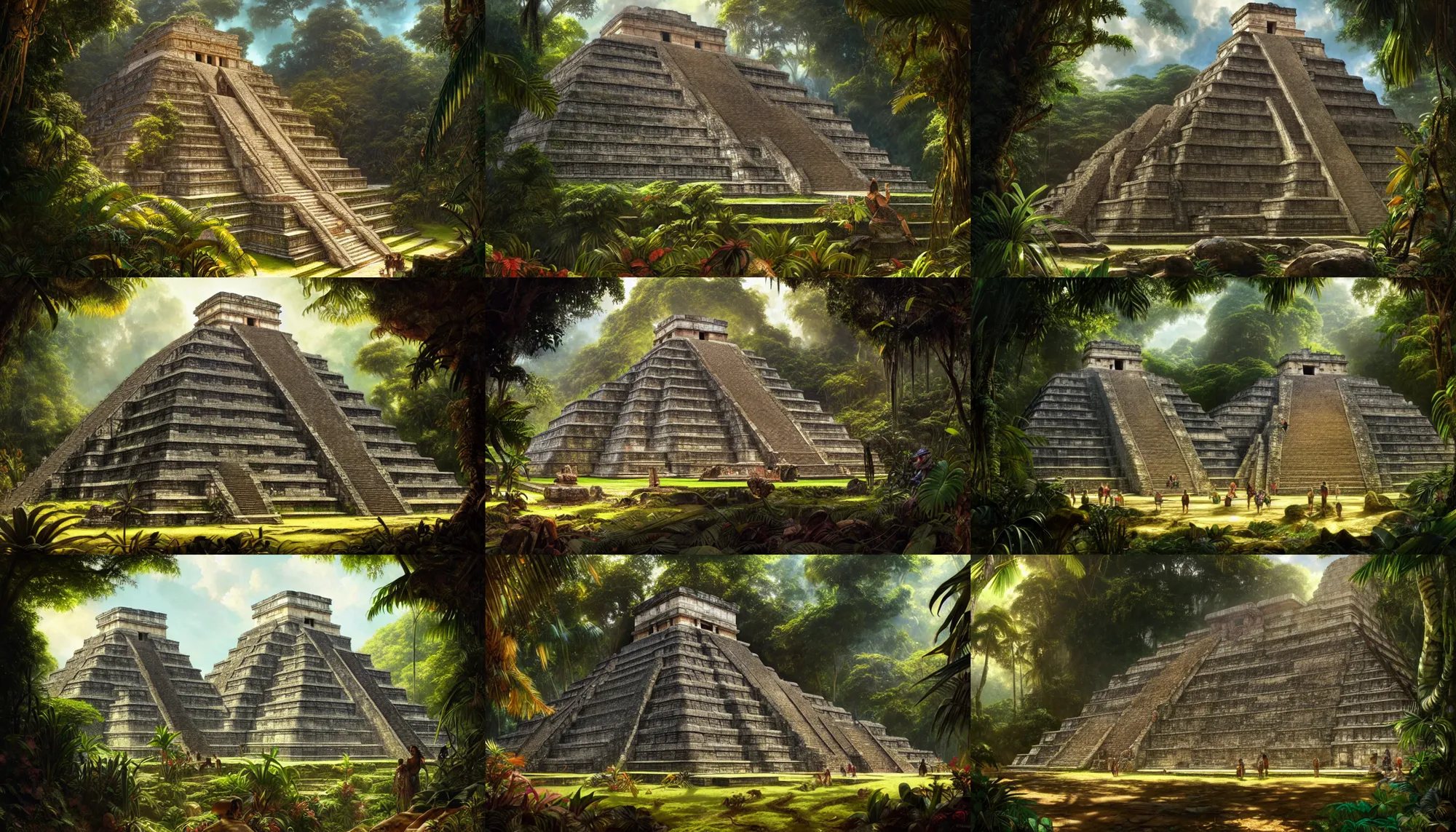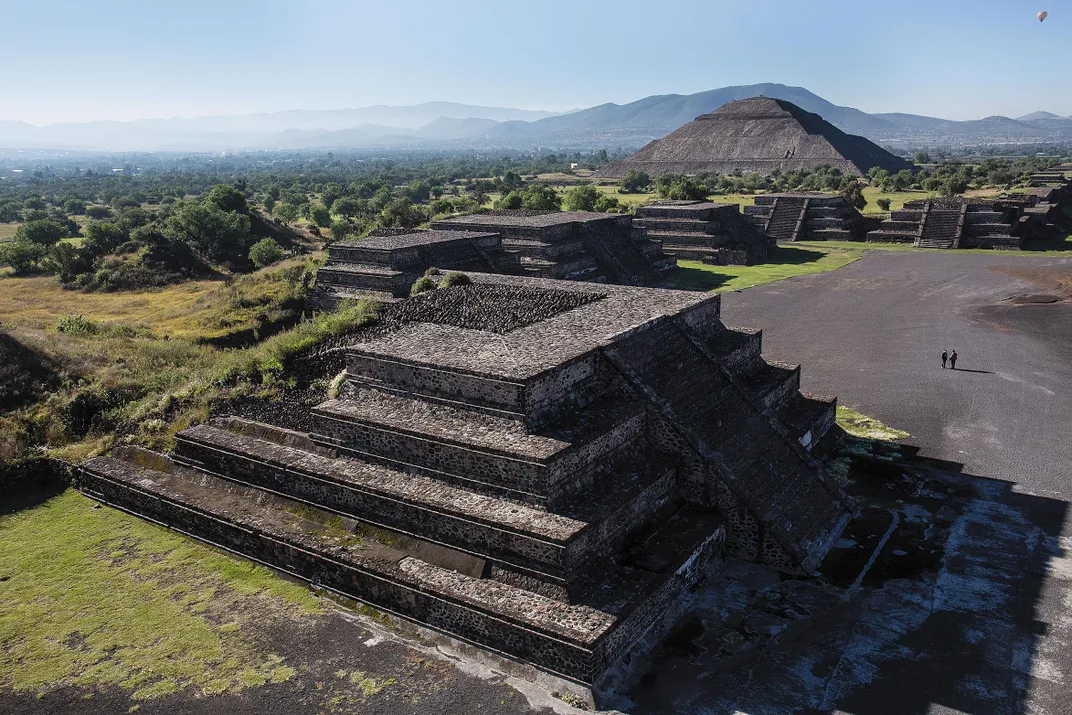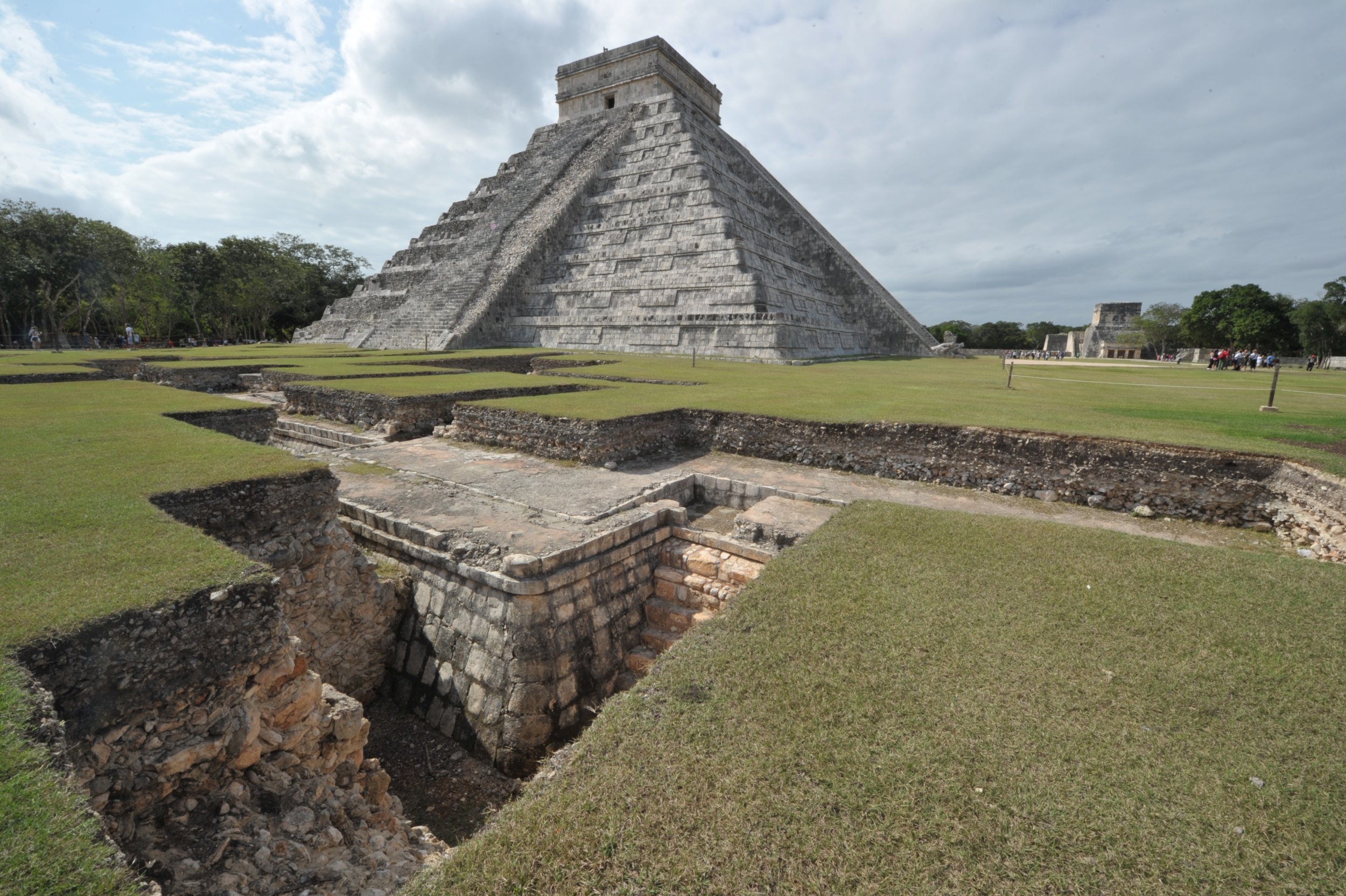Archaeologists believe they have found a new passage into the never-before-seen bowels of a Mayan temple, from a nearby burial room, Mexican newspaper El Universal reports.
The passageway begins in the ossuary—a ruined pyramid hiding a macabre bone vault—within the buildings of the historic Chichén Itzá complex in the Yucatán Peninsula. The route has been mysteriously sealed, and the team of the Great Mayan Aquifer Project that has been studying the ruins for months not only believes the Mayans closed the passage deliberately but also that it leads to the underground of Chichén Itzá’s centerpiece—the large Kukulcán Temple pyramid.
What awaits the scientists on the other side of the passageway is what the project now seeks to find out, team leader Guillermo de Anda told the newspaper.

“Through the ossuary we can enter the cave beneath the structure and there we found a blocked passageway, probably closed off by the ancient Mayans themselves,” de Anda said. His team believes a curious geological formation lies beneath, based on findings by René Chávez, researcher of the Geophysics Institute of the National Autonomous University of Mexico (UNAM). Underground shots using an electrical resistivity tomography kit are the closest scientists have been to seeing beneath the imposing Kukulcán Temple, nicknamed “El Castillo” (The Castle) by the Spanish.

The building, which has the same number of steps as the Mayan calendar had days, served a central purpose to locals’ traditions. One of the most impressive functions of the 80-foot pyramid emerges with the setting sun on the days of the spring and fall equinoxes. Serpentine shadows slither along the building’s northern stairs as sundown approaches, before reaching the stone serpent head, carved at the foot of the staircase.
“We will enter again and, this time, we will try to open it to see if the passageway leads us to the entrance of the cenote beneath the Castle,” de Anda said.
The area around the temple has many natural sinkholes, also known as cenotes, which had a mythical status in local traditions, viewed as thresholds to the realm of the gods, National Geographic reported. Spanish accounts of sinkhole rituals and findings of remains inside them suggest cenotes were used in human sacrifices to rain deities. Anything hidden beneath the temple, especially a sinkhole, could give researchers more insight into the mystical, religious practices of the Mayans.

The labyrinths that unfold in the subsoil of this ancient city have led them to a passageway that could take them to the natural sinkhole found beneath the Kukulcán Temple, a never-seen-before area that so far is only known through the electrical resistivity tomography revealed by researchers of the UNAM two years ago.
“First we want to prove it exists because no one has seen it, we only have the images; then we’d have to explore it,” de Anda said.
Alongside the exploration of the complex, accompanying engineers have been tasked with developing a 3-D map of the underground caves and labyrinths, using ground-penetrating radar and drones.
